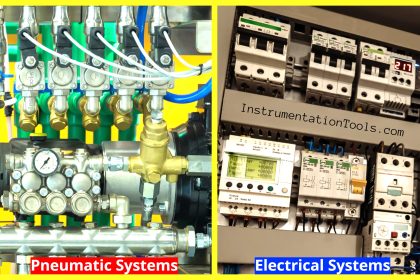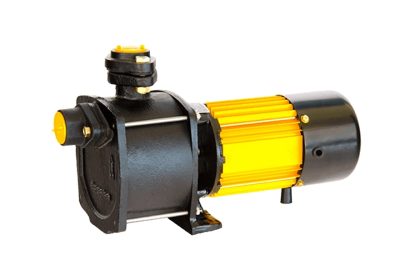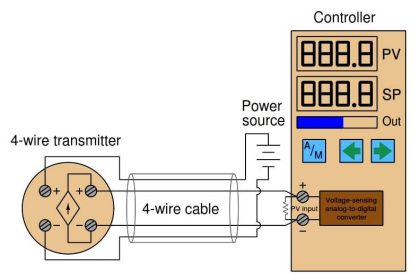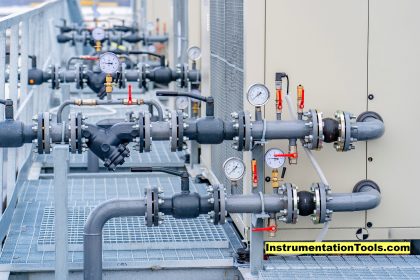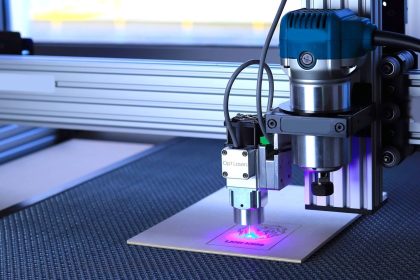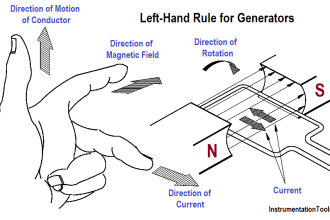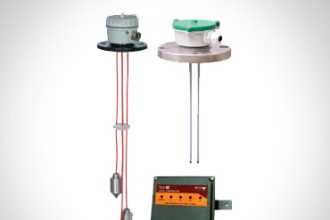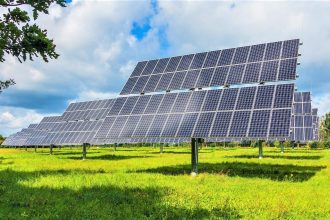In this article, we will see about the Overview of Mechatronics and relate to the evolution of the Industrial Revolution with Mechatronics.
Introduction to Mechatronics
The Word mechatronics was invented by the Japanese Engineer Ko Kikuchi in 1969. It means a combination of the term “Mechanical” (Mecha for mechanisms, i.e., machines that ‘move’) and “tronics” from ‘‘electronics’ i.e., to integrate mechanical, electrical & electronics in a single device.
It is acting as the junctions where the core systems in mechanical engineering, electrical engineering, and computer science were combined together to design, build and operate products.
As a final result, it has greater flexibility, easy redesign and reprogramming, and also the ability to carry out automated data collection, analysis, conditioning, and reporting.
It is not only a combination of Mechanical and electrical systems, it is more than just a control system where it is a complete integration of all of them in which there is a concurrent approach to the design.
Our day-to-day applications like cars, machine tools, washing machines, cameras, and many other machines, such an integrated and interdisciplinary approach to engineering design is increasingly being adopted.
Mechatronics has to involve various disciplines rather than the sequential process. Thus, mechatronics is a path where there is an integration of various engineering fields to do the task.
The mechatronics process brings the various technical areas of sensors, instrumentation, drives and actuators, and controllers together for analysis of the behavior, functions, process steps, and approach to the system.
For example, Sensors and Transducers are relevant to the mechatronics process where they are categorized as Field devices and used for acquired physical data, they will produce commands to activate the output.
This entire system comprising of data acquisition and analysis & control form to the fundamentals of any automation system.
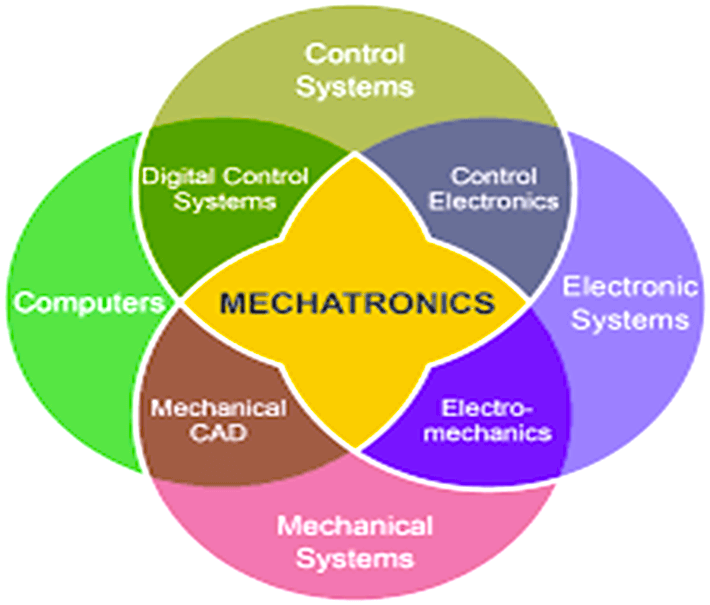
Evolution of Mechatronics
The industrial revolution plays a major role in the evolution of Mechatronics. The Development of Industries and their need led this technology to evolve in today’s world.
Since Mechatronics deals with every aspect of industries in Mechanical, electrical & electronics, computer, and information systems as the revolution of every revolution rises it creates a new need and the birth of Mechatronics gives suitable solutions to many.
Mechatronics is the fourth part of the Industrial revolution after the Mechanical, Semiconductor, and Information revolutions.
Industrial Revolution
This is the first revolution where in this part, the design of products and processes convert and transmit increasing amounts of energy for industrial activities.
Engineering designs in this era performed operations of motions, transmission, sensing, and actuation using mechanical components like Cams, gears, levers, and linkages.
But purely mechanical systems have some limitations like more power amplifications inability and energy losses due to friction and continuous motion.

Semiconductor Revolution
Lead the development of Integrated Circuit (IC) technology and created a major impact on engineering and its products. This revolution is considered as cost-effective than the previous one because of its miniatures size, and power efficiency in amplification, it delivers the required level of power to the mechanical devices through electrical.
Similarly, on the sensing side, this evolution brings condition and encode physical measurements as analog /digital signals. Other than that, hard-wired, onboard, analog/digital electronics provided a computational ability to mechanical devices.
Quick development in electro-mechanical sensing and actuation and hardware was started in this revolution and further filled by the adoption of semi-conductor technology in the design and operation of mechanical devices.
Information Revolution
This revolution enables imparting intelligence to a number of products, process, and machines. At end of the 20th century, this information technology experiences explosive growth, and computing systems become a trend.
A huge transformation in the design and operation of mechanical devices and systems began to combine with information technology enabling imparting intelligence to numerous products, processes, and machines.
Microprocessors start to replace mechanical components, in which many functions are resembled to do quick action with compact size.
And also, the programmability of microprocessors provided many opportunities and it is also considered a flexible alternative to hard-wired analog/ digital computational hardware.
Integration of all computer, mechanical and electrical devices now became capable of converting, transmitting, and processing both physical energy and virtual energy.
Mechatronics Revolution
The current revolution and trend of automation and data exchange in manufacturing technologies is the Mechatronics revolution(Industry 4.0).
The major aspects are Cyber-physical systems, The internet of things, and cloud computing. This revolution created the introduction of methods of self-optimization, self-configuration, self-diagnosis, cognition, and intelligent support of workers in their increasingly complex work.
Domains that would benefit most are Manufacturing, energy, transportation, healthcare, and agriculture.
This revolution has four major principles. They are:
- Inter-operability
- Information transparency
- Technical assistance
- Decentralized decisions.
1. Inter-operability
The ability of machines, man, devices, and sensors are able to connect and communicate with each other through a network.
2. Information transparency
The thing of information systems is to create a virtual copy of the physical world by developing digital modules with sensor data.
This process carries out the collection of data to share for the man or device to do the command.
3. Technical Assistance
The ability of assistance systems to support humans by collecting, and analyzing information from the device or input to solve an urgent problem on short notice, and also it will perform cyber-physical systems to physically support humans for conducting huge tasks that are hazardous, exhausting, or unsafe for the human and co-workers.
4. De-centralized decisions
The capability of making decisions on their own and performing their tasks as automatically as possible. Only in case of exceptions, interferences, or conflicting goals, tasks are fixed to a high level.
The major factor is M2M communication term as Machine to Machine Communication. This means two machines will communicate with each other using any communication channel with wired or wireless communication.
This M2M communication includes sensor reading, data monitoring, data analysis, signal conditioning, and data recording.
This communication will have a remote network of machines with a central hub of the server that will share the other machine or it will carry the process to do some automated task within itself.
Elements of Mechatronics
Mechatronics= Mechanical + Electrical + Electronics + Computing + Robotics.
Mechanical elements refer to the mechanical structure, mechanism, and thermal aspects of a mechatronics system. This may include static/dynamic characteristics and it will interact with the working environment. This mechanical element requires physical power to produce motion, force, and heat.
Electrical refers to the electrical components and circuits, signals and interaction of mechanical actuation and power module for every aspect and Electronic elements refer to analog/digital electronics, transistors, thyristors, amplifiers, power electronics, Op-amp, signal generation, processing and conditioning to the components and circuits. These electrical and electronic elements are used to interface electro-mechanical sensors and actuators to control the system and design.
Electromechanical elements refer to sensors and actuators. These play a major role where the whole process gets activated by making the interface input sensors and output actuators. These sensors will get readings and the processor in the process will do logical conditioning and after the analysis, it will process the actuator.
Computing elements make the logical performance to the processor through programming and interacting with the sensors through commands and data storing, monitoring, and recording will be done in these elements. This will also be a source part for communication where all the components are interacted by network individually or through the central hub server.
Robotics is also an element of this mechatronics it needs all the mechanical, electrical, electronics, control, and programming for doing a specific task or operation in any field. It is the major evolution in today’s world.
These Robotics will develop the future of all the processes as a simple task where the major human operation will be reduced and all the processes will be automated. Some of the robotics applications nowadays are quadcopters, Autonomous vehicles, Pick and Place robots, and humanoid robots.
At present, this robotics will be using the technologies like computer vision, artificial intelligence, machine learning, robot mechanics, and control for doing the process.
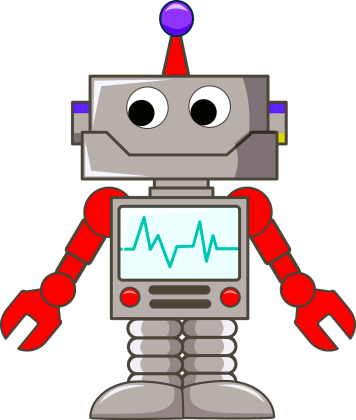
Cobotics is the part of robotics is formed by “collaborative” and “robotics” terms.
This Cobot is designed in a manner where it should interact with humans in a shared workplace.
It is designed in a manner it should operate autonomously or with limited guidance, which is what most industrial robots are doing.
Conclusion
So by this, we are able to understand Mechatronics is a stream of engineering that comprises Mechanical, electrical, electronics, computer control, programming, and integrated operations of all systems. It is considered as a spatial interaction of subsystems in one physical unit and intelligence related to the control function of the system.
Simply Mechatronics is the engineering field where a group of electro-mechanical components which can complete certain tasks or achieve certain desired results in the desired manner while working together.

